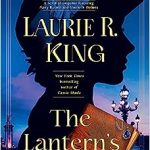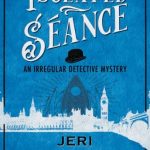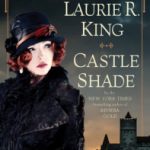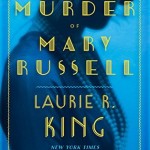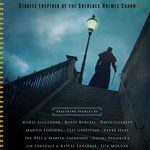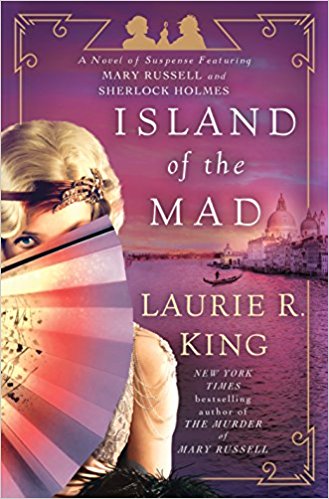 Island of the Mad by Laurie R. King
Island of the Mad by Laurie R. King Format: eARC
Source: supplied by publisher via NetGalley
Formats available: hardcover, paperback, large print, ebook, audiobook
Genres: historical mystery
Series: Mary Russell and Sherlock Holmes #15
Pages: 306
Published by Bantam on June 12, 2018
Purchasing Info: Author's Website, Publisher's Website, Amazon, Barnes & Noble, Kobo, Bookshop.org
Goodreads
Mary Russell and Sherlock Holmes are back in the New York Times bestselling series that Lee Child called "the most sustained feat of imagination in mystery fiction today."
A June summer's evening, on the Sussex Downs, in 1925. Mary Russell and Sherlock Holmes are strolling across their orchard when the telephone rings: an old friend's beloved aunt has failed to return following a supervised outing from Bedlam. After the previous few weeks--with a bloody murder, a terrible loss, and startling revelations about Holmes--Russell is feeling a bit unbalanced herself. The last thing she wants is to deal with the mad, and yet, she can't say no.
The Lady Vivian Beaconsfield has spent most of her adult life in one asylum after another, yet he seemed to be improving--or at least, finding a point of balance in her madness. So why did she disappear? Did she take the family's jewels with her, or did someone else? The Bedlam nurse, perhaps?
The trail leads Russell and Holmes through Bedlam's stony halls to the warm Venice lagoon, where ethereal beauty is jarred by Mussolini's Blackshirts, where the gilded Lido set may be tempting a madwoman, and where Cole Porter sits at a piano, playing with ideas...
My Review:
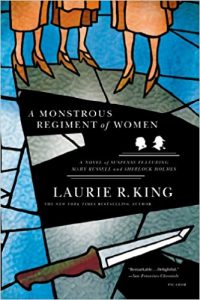 I have followed Mary Russell’s adventures from her very first outing in The Beekeeper’s Apprentice, almost 25 years ago. And how that time has flown!
I have followed Mary Russell’s adventures from her very first outing in The Beekeeper’s Apprentice, almost 25 years ago. And how that time has flown!
The story we have in Island of the Mad reminds me of the best of the Russell/Holmes kanon (yes, that spelling is deliberate) combining the farcical aspects of the case in Pirate King with the more serious undertones, as well as a few of the characters, from the second book in the series, A Monstrous Regiment of Women. And the result is glorious – as well as a bit star-studded.
And if you’ve ever wondered about the origin of the name “Lido”, which seems to be a deck on every cruise ship as well as appearing in multiple songs and all sorts of other places, our journey also takes us to what feels like the original of the name, the Lido di Venezia in the beautiful La Serenissima – Venice.
The case before our intrepid heroine is to determine whether her best friend’s aunt disappeared of her own free will, was the victim of some foul deeds, or succumbed to the madness that has plagued her for the past dozen years or so.
Or perhaps all of the above.
When Mary’s search for Vivian Beaconsfield leads her from Bedlam to Venice, a separate case miraculously (or perhaps nefariously) appears before her husband Sherlock Holmes. Mycroft desperately wants his brother to poke his inquisitive nose into the rise of the Fascisti in Italy. While too many people in England think that a strong man like Il Duce Mussolini is just what Italy needs, Mycroft is certain that there is something sinister about the rise of the fascists in Italy, Germany and possibly even Britain.
History proved he was right, but in 1925 all that Mycroft had was his finely honed intuition. He can’t send an agent because even he can’t describe what an agent should be looking for. But if there is something to find, Mycroft is certain that Sherlock will find it. Or that it will find him, whether he wants it to or not.
While their separate missions lead them to the same city, the things that need investigation pull them in entirely different directions. While Mary hunts for evidence of Vivian’s presence among the more outre denizens of Venice’s celebrating ex-pat nightlife, Sherlock inveigles himself into the household of American composer Cole Porter, where anyone who is anyone in the city is entertained in lavish style while the rich Americans drop millions of lira into the local economy.
When their respective cases dovetail into one another, the conclusion of both trails ends in a bang, a whimper, and an explosion of sound and light. Lots and lots of bright, white, revealing light. Flashbulbs!
Escape Rating A: As much as I love this entire series, naturally some of the stories work better than others. Island of the Mad worked really, really well, because it went back to the elements that make this series so special.
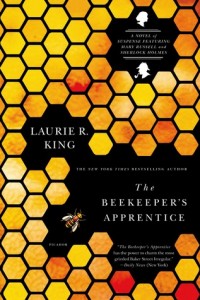 The premise of this series, established all the way back in The Beekeeper’s Apprentice, was that after Sherlock Holmes retired to the Sussex Downs at the end of his adventures, he literally stumbled over a 15-year-old girl – or rather she stumbled over him while her nose was buried in a book. After that fortuitous meeting, he took her on as an apprentice, and in the course of her apprenticeship, they eventually, after the events in A Monstrous Regiment of Women, married.
The premise of this series, established all the way back in The Beekeeper’s Apprentice, was that after Sherlock Holmes retired to the Sussex Downs at the end of his adventures, he literally stumbled over a 15-year-old girl – or rather she stumbled over him while her nose was buried in a book. After that fortuitous meeting, he took her on as an apprentice, and in the course of her apprenticeship, they eventually, after the events in A Monstrous Regiment of Women, married.
If you can swallow that premise, and admittedly some people can’t, the entire series is marvelous from beginning to the present. I don’t say beginning to end, because I sincerely hope the end never comes. If you can swallow the premise and have not read the rest of the series, well, you could start with this one. It does stand a fair bit on its own. But it would lose some of its resonance. If you are interested, but just not up to plowing through all 14 previous books in one go, read at least the first two so that you know how these two fit together into their singular relationship.
The series began in 1915, and this story takes place in 1925. Holmes and Russell have been married for several years, and are quite happily married. Also, it is a real marriage and not in any way a marriage of convenience – as many of their acquaintances occasionally assume. Their marriage is a true partnership, and much of the fun of the series is watching them work together, even if, as happens here, they are sometimes apart in their togetherness.
The stories are always told from Russell’s perspective, with her parts being in the first person, and Holmes’ separate investigations in the third person. We operate from inside her head, but with extremely rare exceptions, never inside his. Holmes is as inscrutable as ever, including at times to his wife.
There’s a difficult balance to strike between having Russell operate on her own and making sure that Holmes participates enough to keep things interesting for both them and the reader. The books do not always strike that balance well, but this particular outing does. They have separate tasks to perform and separate ways to go about them, but they check in with each other on enough of a regular basis for the reader to feel invested in both cases, and for the dovetailing at the end to work well.
One of the things that makes this series different from other Holmes pastiches and continuations is not just Russell’s voice but the way that she takes Holmes’ training and moves it into a new century with the different sensibilities of both her generation and her gender.
There are two dark themes underlying the froth in this particular outing. One is, of course, the rise of fascism in between-the-wars Europe and just how quickly and easily the fascists have taken over Italy. That is a darkness and a threat that Holmes would both recognize and fight against whether Russell was present or not. And any resonance between the situation they investigate and current xenophobic and tyrannical regimes rising today is probably intentional.
But just as the way that the fascists have come to power leads the reader to compare that situation to the present, so does the initial case that takes Russell to Venice in the first place. Her best friend’s aunt has been committed to Bedlam, the psychiatric asylum in London, for years. She has escaped. As Russell investigates, it turns out that the question isn’t why she escaped, but why she was committed in the first place. And if you don’t see the #MeToo movement peeking out from behind the historical curtain, you’re not looking.
There’s a lot of substance under the froth of the “Young Things” partying between the wars and the glitter of the ex-pat night life – if you want to look for it. But even if you don’t, it’s a fascinating story from the very first page.
I look forward, as always, to Mary Russell’s next investigation.




